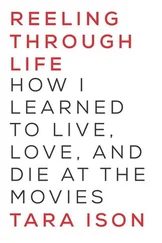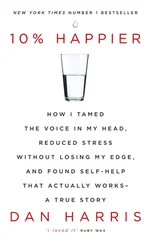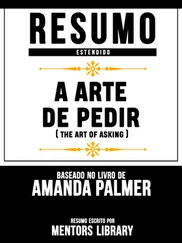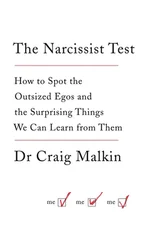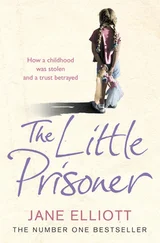We’ve been watching you, and we have evidence that you have NO IDEA WHAT YOU’RE DOING. You stand accused of the crime of completely winging it, you are guilty of making shit up as you go along, you do not actually deserve your job, we are taking everything away and we are TELLING EVERYBODY .
I mentioned The Fraud Police during a commencement speech I recently gave at an arts college, and I asked the adults in the room, including the faculty, to raise their hands if they’d ever had this feeling. I don’t think a single hand stayed down.
People working in the arts engage in street combat with The Fraud Police on a daily basis, because much of our work is new and not readily or conventionally categorized. When you’re an artist, nobody ever tells you or hits you with the magic wand of legitimacy. You have to hit your own head with your own handmade wand. And you feel stupid doing it.
There’s no “correct path” to becoming a real artist. You might think you’ll gain legitimacy by going to art school, getting published, getting signed to a record label. But it’s all bullshit, and it’s all in your head. You’re an artist when you say you are. And you’re a good artist when you make somebody else experience or feel something deep or unexpected.
When you’ve “made it” in academia, you become a tenured professor. It’s official. Most of the time, though, “outside” appointment and approval ( Congratulations! You’re an official Professor/CEO/President/etc .) in any field doesn’t necessarily silence The Fraud Police. In fact, outside approval can make The Fraud Police louder: it’s more like fighting them in high court instead of in a back alley with your fists. Along with all the layers of official titles and responsibilities come even deeper, scarier layers of oh fuck they’re gonna find me out .
I can imagine a seasoned brain surgeon, in the moment before that first incision, having that teeny moment where she thinks:
For real? I dropped my cell phone in a puddle this morning, couldn’t find my keys, can’t hold down a relationship, and here I am clutching a sharp knife about to cut someone’s head open. And they could die. Who is letting me do this? This is BULLSHIT .
Everybody out there is winging it to some degree, of this we can be pretty sure.
In both the art and the business worlds, the difference between the amateurs and the professionals is simple:
The professionals know they’re winging it.
The amateurs pretend they’re not.
• • •
On an average day, working two bouquets of flowers, I could make over a hundred dollars. Sometimes more, sometimes less, but it was certainly more than the $9.50 an hour I was earning at Toscanini’s.
The consistency of the income really did amaze me. If the weather held, I could count on making about $40 to $50 an hour from random people walking by and making random decisions to give me a random amount of money.
How was it possible that it was so predictable? That’s a question for the economists, I suppose. When I asked my Twitter followers about this, and the statisticians started weighing in about entropic probabilistic synchronicity, I gave up and settled on a simpler theory:
Given the opportunity, some small consistent portion of the population will happily pay for art .
• • •
Sometimes, up on the box, I would fall in love with people. Pretty often, come to think of it. It was easy, given how safe and swaddled I was up there in my cloud of pretty, white, untouchable stillness. No commitment. Just this, just now, just us.
Occasionally one of the more broken-looking homeless people of Harvard Square would approach me, drop a dollar in, and I would offer my flower. We’d look at each other, and sometimes their faces would crumple and tears would appear.
Hi .
I see you there .
I can’t believe you just gave me a dollar .
You probably need it more than me .
I’ve been watching you circle the plaza all day asking people for money and I hope to god you know that you and I are, in this moment, exactly the same .
I never felt guilty about those dollars, though, because there was such a beauty and humanity in the fact that these homeless people were, right along with the rich tourists, stopping to connect with me. They saw value in what I was doing. They saw the power and necessity of the human connection.
Was it fair ? I don’t know. It felt fair.
There was something conspiratorial about it; their money felt symbolically valuable to me in a way that made me swell with pride—they approved of me, and their approval somehow meant more to me than anybody else’s.
I started to realize there was a subterranean financial ecosystem in Harvard Square involving all of us street freaks. I found it impossible to pass the other street performers—a revolving cast of puppeteers and musicians, jugglers and magicians—or the homeless folk, without giving them my own dollars, sometimes dollars from my own hat that I’d been given just minutes before. The gift circulated.
One day a really old, raggedy-looking Japanese guy watched me for a very long time.
He made himself a little perch on one of the cement benches across the sidewalk, surrounded by rolled-up sleeping bags and a colorless, tattered collection of garbage sacks, and sat there, looking at me with his weathered face. I watched him out of the corner of my eye. After about an hour, he dug into his pocket and fished out a dollar, and he shuffled over to me, put the dollar in my hat, and looked up.
Here’s your flower .
I see you .
His eyes narrowed, and he looked at my face, like he was looking for the answer to a question that I couldn’t hear him asking, and I just stared right back. And then he nodded slightly, took the flower, and shuffled away. I loved him.
The next day he came back and left a note in the hat.
He wanted to know if I would marry him.
I don’t know how he expected me to answer.
I never saw him again.
• • •
I wanted to be seen.
That was absolutely true. All performers—all humans—want to be seen; it’s a basic need. Even the shy ones who don’t want to be looked at .
But I also wanted, very much, to see .
I didn’t quite grasp this until I had been up on the box for a while. What I loved as much as, possibly even more than, being seen was sharing the gaze. Feeling connected.
I needed the two-way street, the exchange, the relationship, and the invitation to true intimacy that I got every so often from the eyes of my random street patrons. It didn’t always happen. But it happened enough to keep me up on the box.
And that’s why stripping, even though it often paid way better, when I tried my hand at it a few years later, just didn’t do it for me. I was being looked at. But I never felt seen. The strip joint was like Teflon to real emotional connection. There was physical intimacy galore: I witnessed hand jobs being given under tables, [2] My mother will be happy to know I never gave one. HI MOM.
and lots of legs and tits and more being covertly rubbed at the bar. I danced for endless hours, stark naked on a stage, and talked for even more hours with the loneliest men in the world while pretending to drink champagne. We strippers were experts in dumping our drinks back into ice buckets when the customers weren’t looking—it was a job skill you actually had to acquire working at The Glass Slipper. If I’d actually drank all the absurdly overpriced champagne (from which I earned a 15 percent cut) that was purchased for me on a good night by lonely men who wanted to chat, I would have consumed, in the course of my six-hour shift, enough to have brought me to a blood-alcohol level of approximately five-point-dead.
Читать дальше

